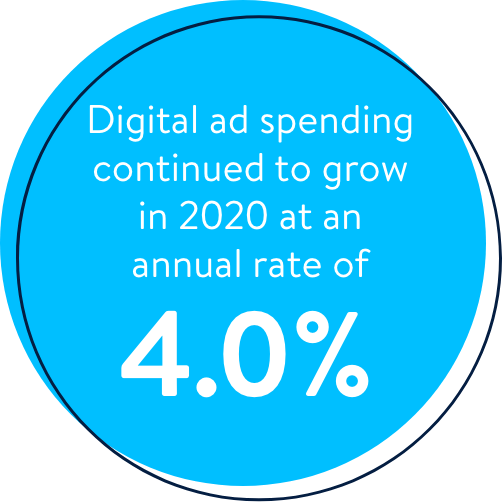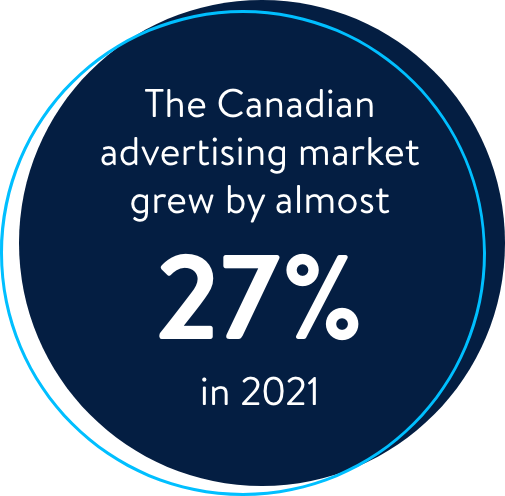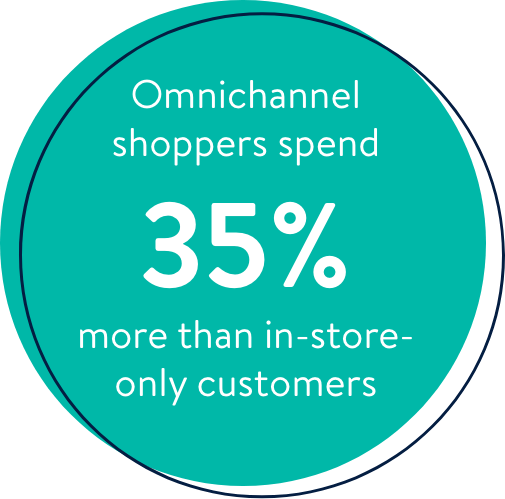

Brands and advertisers in the Canadian market have responded to the boom in ecommerce by increasing their digital spend, but they are not yet fully leveraging retail media's full potential as they invest their digital dollars.

The future of shopping is hybrid, and marketers have a window of opportunity to spend strategically right now.

Brands at the cutting edge see the unique opportunity of retail media: the data, the ad offering, and the ability to drive conversion, all within one ecosystem.
There’s a good reason why marketers around the globe are talking about retail media. Ad spend in this category is in the midst of rapid growth, and this trend is expected to not only continue, but accelerate. Advertisers follow where consumers go—and with more ecommerce activity than ever before, combined with the ascendance of omnichannel shopping experiences, marketers are focusing on media that reach customers at the point of purchase, whether in-store or online. So where is retail media in the Canadian marketing mix?

At a glance, retail media programs have been less pronounced in Canada than elsewhere in the world. Of the countries listed in the GroupM TYNY 2020 report, Canada comes in 9th globally. This is well behind the frontrunners.
Forrester’s 2022 prediction on retail media revenue forecasts that in the US, ad dollars spent in the space are expected to eclipse YouTube ad spend later this year. This represents a massive upsurge.
But progress isn’t stalled in Canada. Momentum has been building for the past two years, and we’re arriving at a turning point. From here, it’s reasonable to expect fast and far-reaching growth going forward.
Behind the trend: The slow start in Canada can partially be attributed to the pandemic, when media ad spend decreased 7.3% in 2020 compared to 2019. But the hit didn’t stop retail from resuming its growth. Brands and retailers pivoted to e-commerce, and retail sales passed the pre-pandemic peak as early as Q3 2020.1
Even during the pandemic, digital ad spending continued to grow in 2020 at an annual rate of 4.0%,2 as brands reallocated resources to online channels.
Brands in the Canadian market trended toward more conservative responses to the crisis. They allocated most of their digital ad spend to familiar tactics such as video advertising, which grew by 15.2% in 2021, and mobile advertising, which grew by 15.3%. Yet these “safe” strategies are also a decade old. Today’s reality is increasingly omnichannel.
Canadian retail sales are set on growth in 2022, with 57% of businesses recognizing indicators of future sales.3 The Canadian advertising market grew by almost 27% in 2021, higher than the global average of 22%—this is an unprecedented upsurge.
While ad spend in Canada may be ahead of the global median, is it keeping pace with consumers? Digital ad sales grew 33% last year, but consumers are engaging both online and offline. With Forbes predicting the dominance of “hybrid” retail models globally in 2022, reflecting consumers' preferred ways of shopping, the value of retail media is becoming readily apparent.

However, at present, saturation and competition are still relatively low in the Canadian retail media market. Meanwhile, consumer traffic continues to climb. There’s a clear window of opportunity for marketers to jump in and carve out a niche before their competitors do.
But it’s necessary to act decisively to make the most of retail media as an early adopter in Canada: the strategy is gaining traction. We’ve measured this at Walmart Connect Canada, where the number of retail media advertisers rose 20% in 2021, and the total number of programs grew 42%.

One of retail media’s greatest advantages is the ability to reach customers where they shop: when purchasing products digitally, 77% start their searches on retail sites. It’s effective to expose them to additional promotions exactly when they’re in a mindset to buy.4 When shopping digitally, consumers are also more likely to respond to an advertisement from a brand when they’re already on its site, or on the site of an affiliated retailer, rather than while browsing the web or social media.
Therefore, retail media isn’t just about expanding the reach of advertising efforts—it’s about tangibly increasing conversions, regardless of whether customers are in-store, online, or both. At Walmart Canada, omnichannel shoppers spend 35% more than in-store-only customers. In-store retail media such as print, signage, and digital out-of-home generate awareness and interest, while onsite and offsite displays, sponsored searches, and brand pages can engage them on their personal devices. Both channels can be brought together through creative, experiential offerings that may begin with a virtual touchpoint but end with an in-person purchase, or vice versa.
There’s another benefit to deploying retail media to complement ecommerce and omnichannel advertising strategies: brands can leverage first-party data collected on digital platforms to make strategic decisions about how and when to use ad dollars. Retailers know the details of their customers' shopping patterns, and these insights enable effective always on campaigns. The data also makes it possible to directly attribute sales to advertising campaigns for a more accurate marketing ROAS.
We know that marketers have always followed where customers lead, and omnichannel is the next frontier. ”Retail is a robust and powerful industry, so it should come as no surprise that more than three quarters of brands agree that their growth depends on retail media.”5 Prioritizing retail media as programs isn’t a matter of “if,” but “when”—and market leaders are taking initiative now.

2 Worldwide Digital Ad Spending Year-End Update
3 Business Outlook Survey―Fourth Quarter of 2021
4 Worldwide Digital Ad Spending Year-End Update
5 Retail Media Offers New Opportunities for Brands—Here’s How




